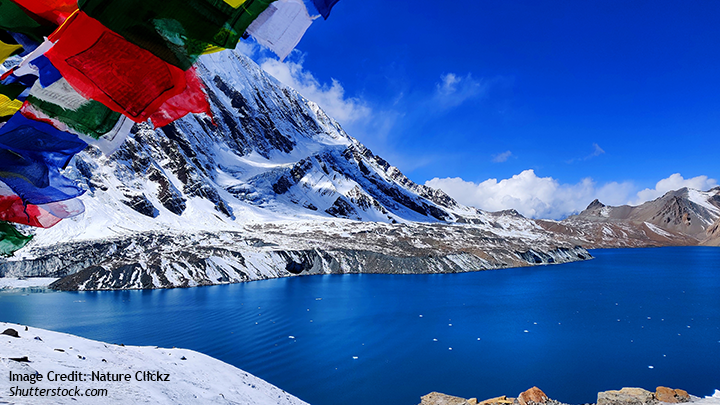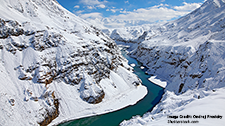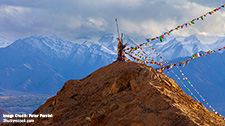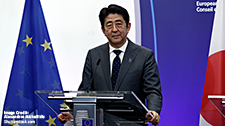Nepal Is Hardly China’s Best Bet in the Himalayas

Saroj Kumar Aryal and Jagannath Panda
In July, Nepal’s fractious politics witnessed yet another churning in a span of months: 72-year-old veteran politician Khadga Prasad Sharma Oli of the Communist Party of Nepal–Unified Marxist Leninist (CPN–UML) – labeled “pro-China” by the Chinese media in his first term itself – won the vote of confidence in the Parliament soon after being sworn in as prime minister for the fourth time. Days after, Foreign Secretary Sewa Lamsal left for Kunming, China, to deliver the keynote address and hold bilateral meetings with high-level officials at the fifth China-South Asia Cooperation Forum – China’s attempt to coalesce South Asian states, but excluding India, to create a “regional Himalayan bloc” as part of its Sino-centric global order agenda. Do such events imply that China is gaining an irreversible edge over India in the neighborhood?
The answer is more complicated than what the headlines suggest as China’s controversial “lumping” of projects like the China-funded Pokhara International Airport under the Belt and Road Initiative (BRI) and Nepal’s reported investigation into the project indicate. Besides, the new government is yet another coalition based on a recent deal forged between the two largest parties the Nepali Congress (NC) and the CPN–UML, which among other factors also includes sharing the prime ministerial position between Oli and the NC President Sher Bahadur Deuba. Moreover, the new alliance is largely expected to still bring stability although the previous Pushpa Kamal Dahal-led “left-unity” coalition broke down only months after without any major apparent disagreements.
Importantly, the formation of about 13 governments in the last more than a decade and a half since Nepal became a federal democratic republic in May 2008 already prompted deeper questions about domestic politics and its repercussions for not only Nepal’s economy and good governance but also its foreign policy. This sounds promising for India, which has been looking to curb China’s growing role in Nepalese domestic economy and politics. But will Modi’s post-election (2024) version of the already tested Neighborhood First policy be able to incorporate the lessons learned in his third term to retain India’s traditional stronghold? Also, what will the ensuing domestic and regional politicking mean for Nepal’s engagements with China and India, notwithstanding the reservations about such simplistic characterization as the Nepali Congress widely seen as “pro-India” and CPN–UML as “pro-China”? With China also attempting to align South Asian states under its umbrella in its new avatar as a so-called global “peacebuilder,” be it between Iranians and Saudis or uniting Palestinian groups, will Nepal follow China’s diktats or retain its autonomy? Can India’s burgeoning economic, high-tech, and security bonhomie with the West, including the European Union (EU), help its Nepal outreach?
Read the complete article in The Diplomat on July 31, 2024. This piece is an outcome of Stockholm Center for South Asian and Indo-Pacific Affairs (SCSA-IPA) research project titled “China’s Himalayan Hustle“.
Related Publications
-
Report of the Webinar on China’s Himalayan Hustle – Part II: Will Eco-Dominance Be China’s New War Front?
This report is an outcome of the webinar titled “China’s Himalayan Hustle – Part II: Will Eco-Dominance Be China’s New War” held on June 18, 2024. Dr. Jagannath Panda moderated […]
-
China’s Himalayan Hustle: Revisionism Resistance Must be the Order of the Region
This edited volume brings together papers to highlight the challenges and opportunities in mapping China’s Himalayan hustle. It aims to advance key debates about the importance of this region to […]
-
Navigating the Indo-Pacific: How Australia and the EU Can Partner for Peace, Stability, and Prosperity
To navigate the choppy waters of the Indo-Pacific, the EU and Australia must be on the same wavelength regarding shared interests in rules, values, and an open and liberal economic […]
-
Why the Himalayan Region Is Integral to a Rules-Based Order in the Indo-Pacific
In June 2024, former U.S. House Speaker Nancy Pelosi minced no words in criticizing the Chinese government and President Xi Jinping for the persecution of Tibetans, including attempts to erase their culture. […]
-
Strong Europe-Japan Relations are a Legacy of Shinzo Abe
Abe was a firm proponent of strengthening a free, open and rules-based Indo-Pacific. Not only was he steering Japan away from total dependence on the U.S. for its security, but […]




